Creatives craft fun, thoughtful ways to boost designs for an inclusive society
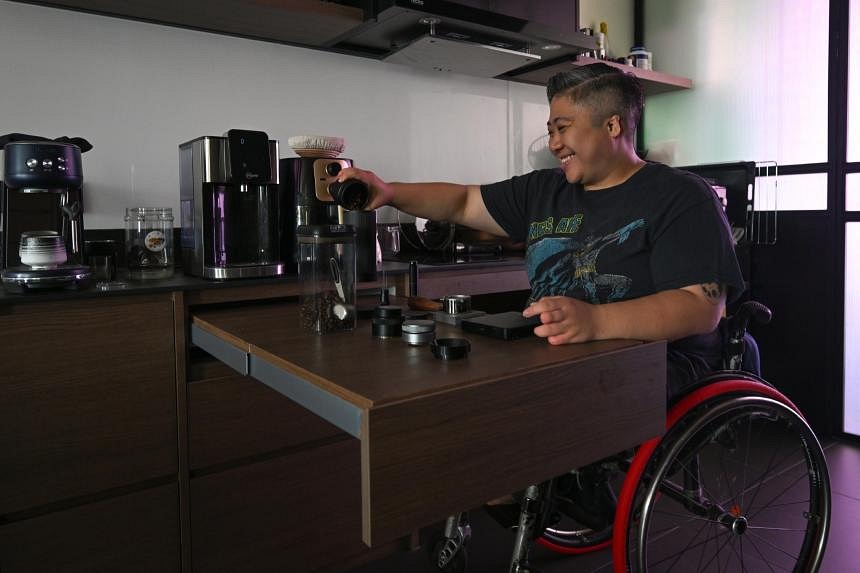
SINGAPORE - Creatives in Singapore and around the world are working imaginatively to shape more inclusive communities.
According to the latest numbers from the World Economic Forum (WEF), more than 1.3 billion people live with some form of disability, representing not only 17 per cent of the global population but also the largest minority group worldwide.
WEF aims to close the disability inclusion gap through a slew of initiatives, including getting 500 of the world’s biggest companies to commit to helping people with disabilities.
Some of the big names leading the charge are chief executives like Mr Tim Cook from Apple, Mr Sundar Pichai from Google and Mr Kenichiro Yoshida from Sony Group.
The forum adopts the United Nations’ social model of disability, which is the globally recognised way to address disability.
This is when the focus is shifted from the individual’s impairment to societal barriers preventing people with disabilities from fully participating in society.
In Singapore, home-grown multidisciplinary firm Stuck Design partnered SG Enable in 2022 to help produce the agency’s ground-breaking Design Playbook for Inclusive Spaces.
SG Enable, the focal agency for disability and inclusion in Singapore, enables those with disabilities to live, learn, work and play in an inclusive society. It was set up by the Ministry of Social and Family Development in 2013.
The e-book, which is free on SG Enable’s website (sgenable.sg), is designed to guide businesses in creating inclusive spaces and experiences.
Stuck Design’s co-founder and principal designer Tze Lee, who helmed the six-member design team that worked on the project, says inclusive design goes beyond physical accessibility.
“It considers the experience of the place for everyone and is a great starting point for inspiring new experiences that benefit the community,” he says.
He adds that Stuck is looking at ways for companies to easily do a spatial scan of their existing spaces – based on SG Enable’s playbook principles and in partnership with people with disabilities – to uncover more opportunities for inclusive design.
“The Playbook is built on insights from various people with disabilities, caregivers and businesses with an inclusive slant,” says Mr Lee.
“We engaged this diverse set of participants through in-depth conversations and co-creation sessions, to uncover their needs and aspirations for more inclusive spaces.”
Swimming ace Theresa Goh, who flew the Singapore flag at the Paralympics in Athens in 2004, is looking forward to watching the 2024 Summer Paralympics in Paris – to be staged from Aug 28 to Sept 8 – from the comfort of the airy living room of her newly renovated home in Tampines.
She collaborated with local architect and interior designer Charmaine Wong on revamping her four-room Housing Board flat to allow her to move around easily on her wheelchair, as well as reach for essential items without straining.
“After the redesign, the space is cooler with cross-ventilation due to the absence of barriers,” says Goh, adding that she looks forward to “coming home to the laid-back vibe and to just chill out”.
Paralympian Theresa Goh’s revamped flat
Ask Paralympic medallist Theresa Goh which part of her recently renovated four-room Housing Board flat is her favourite, and she has a ready answer: “My kitchen.”
Singapore’s first Paralympic swimmer tells The Straits Times: “I can enter on my wheelchair, make a cup of coffee, fry an omelette, swing around and zip back to my sink in a jiffy. Everything I need is within easy reach.”
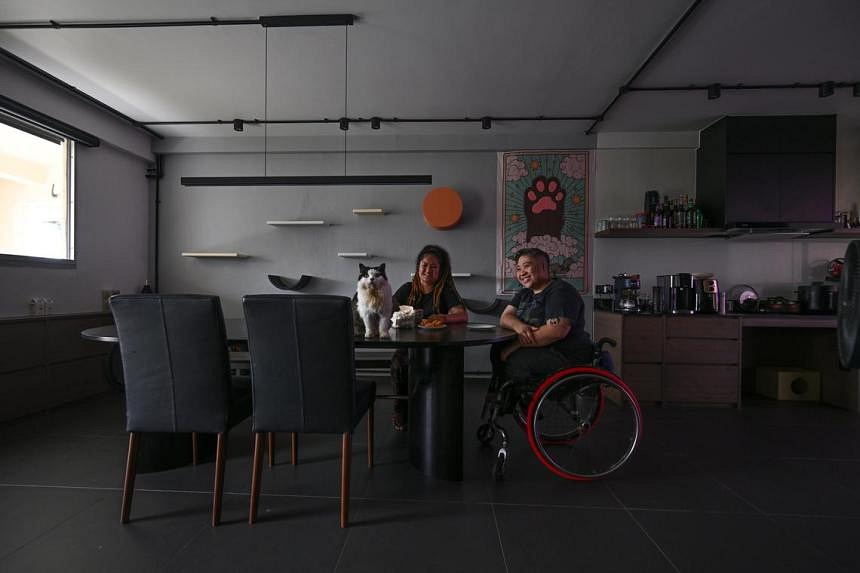
After a nine-month design gestation period which ended in November 2023, Ms Goh’s dream home in Tampines – with “lots of space, accessibility and cats” – was born.
The 1,048 sq ft HDB corridor flat, featuring dramatic black flooring and monochromatic walls, is almost double the size of her previous two-bedroom unit in The Tapestry condominium complex, also in Tampines.
“In my 700 sq ft condo, there was hardly any wiggle room,” recalls Ms Goh, 37. She lives in the flat with her partner, Ms Kethlyn G, and two immaculately groomed cats named Sebastian and Cosmo.
Ms Goh, who retired from competitive sports in September 2019, works as a sports officer at the Singapore Disability Sports Council (SDSC), where she helps athletes work out their pathways in sports.
Her duties include managing training schedules, working with the coaches to select competitions to help athletes progress and planning the annual sports budget.
In 2004, she became Singapore’s first female Paralympic swimmer, competing at the 2004 Paralympic Games in Athens.
Besides winning a Paralympic Bronze Medal, she is also the most bemedalled Singapore athlete at the Asean Para Games, having snagged 33 medals, 30 of which are gold.
In 2008, Ms Goh was conferred the Pingat Bakti Masyarakat (Public Service Medal) at the National Day Awards. In 2016, she was presented the Bintang Bakti Masyarakat (Public Service Star) at the National Day Awards.
Her dazzling sports career has inspired other young Singaporeans with disabilities to venture into competitive sports.
She says she is living a “normal” life far from the rigours of the sporting arena and surrounded by loved ones.
“After months of searching for a place since late 2022, we finally found this unit, which ticked all the boxes for us,” she says.
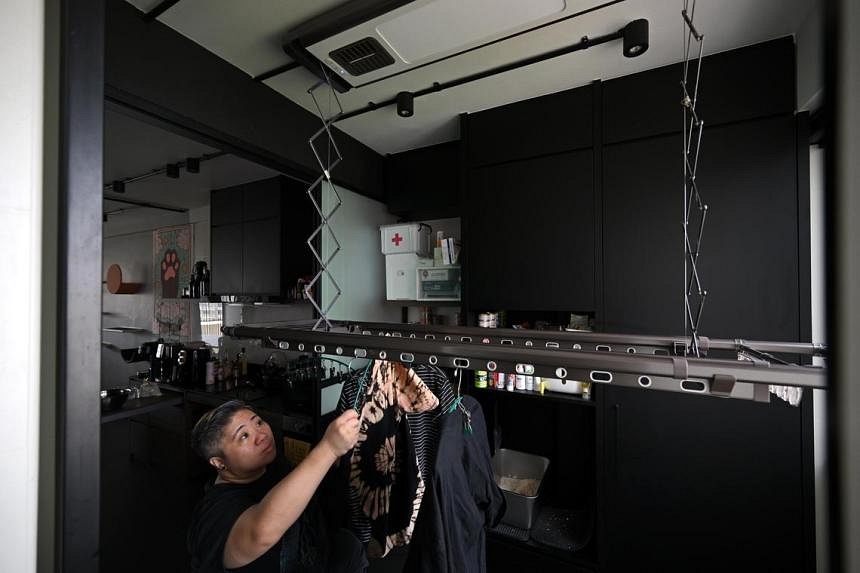
She commissioned Ms Charmaine Wong, founder and principal architect of home-grown design ateliers Chalk Architects and Chark, to design the place. Ms Wong leads a team of designers and consultants for projects ranging from architecture to interior design.
While other designers were quoting her up to $120,000 for the renovation, Ms Wong agreed to work with Ms Goh’s revised budget of around $95,000, which was still more than the $50,000 Goh had initially budgeted.
Since March 2023, Ms Wong, 42, and her design partner Isjacob Ishak, 33, worked closely with Ms Goh and her able-bodied partner to come up with a design that focused on the little details of daily life that made all the difference for a wheelchair user.
The designers spared no effort to create a barrier-free environment inside the flat.
For example, Ms Goh says, the old kitchen countertop – which impeded movement from the living room to the kitchen – was dismantled.
Special kitchen shelving units and storage racks by German home fittings and architectural hardware brand Hafele were also installed for easy access.
“From pulling down the clothes dryer in the kitchen balcony area to pulling out the shelving units for my condiments and spices for cooking, I have everything I need in the kitchen within arm’s reach,” she says.
After a detailed survey of the flat, Ms Wong focused on the need to address basic functions such as a user-friendly threshold detail between bathrooms and the dry areas, and enlarging key spaces to allow for easy manoeuvring of Ms Goh’s wheelchair.
“We envisioned a characteristic home design that matches their vibrant personalities through colours and playfulness; energising and never dull or sterile,” says Ms Wong.
She says the success of inclusive design is when barrier-free, wheelchair-friendly features are well integrated into the home’s overall flow and aesthetic.
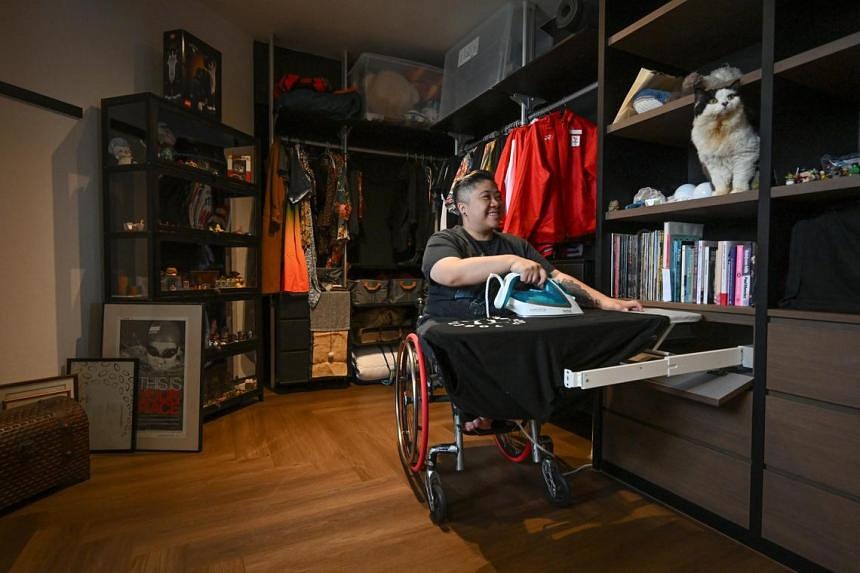
For instance, a ramp kerb and gentle floor gradient were used at the threshold between the bathroom and master bedroom to make it easier for Ms Goh to move around in her wheelchair. It also keeps water from spilling out of the bathroom.
Voice-activated electrical appliances such as Prism fans and air-conditioning are also linked to a Google home automation system.
The mounting positions for general switches and power points have also been placed at accessible heights.
Space dividers made of dichroic glass, also called “colour effects glass”, display a different colour depending on the natural light outside.
“This translucency provides screening to areas which require privacy and also hides away clutter,” says Ms Wong.
“The blurry silhouettes and peekaboo effect add playfulness.”
Sentosa’s Wheel Venture Accessibility Tour
Sentosa not only launched the trial of its accessible beach track at Siloso Beach on Aug 10, but also a new tour of the island, helmed by people with disabilities.
The initiatives are part of the Sentosa Development Corporation’s (SDC) commitment to be a more inclusive tourist destination.
The Sentosa Wheel Venture Accessibility Tour, conducted in collaboration with home-grown tour operator Tribe Tours, has guides with disabilities. They play key roles in designing different aspects of the tour, such as feasibility and specific experiences for wheelchair users.
The five-hour tour – which includes forest bathing, outdoor dining and mini-golf – is designed for wheelchair users. The itinerary includes visits to key attractions such as Sentosa Nature Discovery, SkyHelix Sentosa and UltraGolf at The Palawan @ Sentosa.
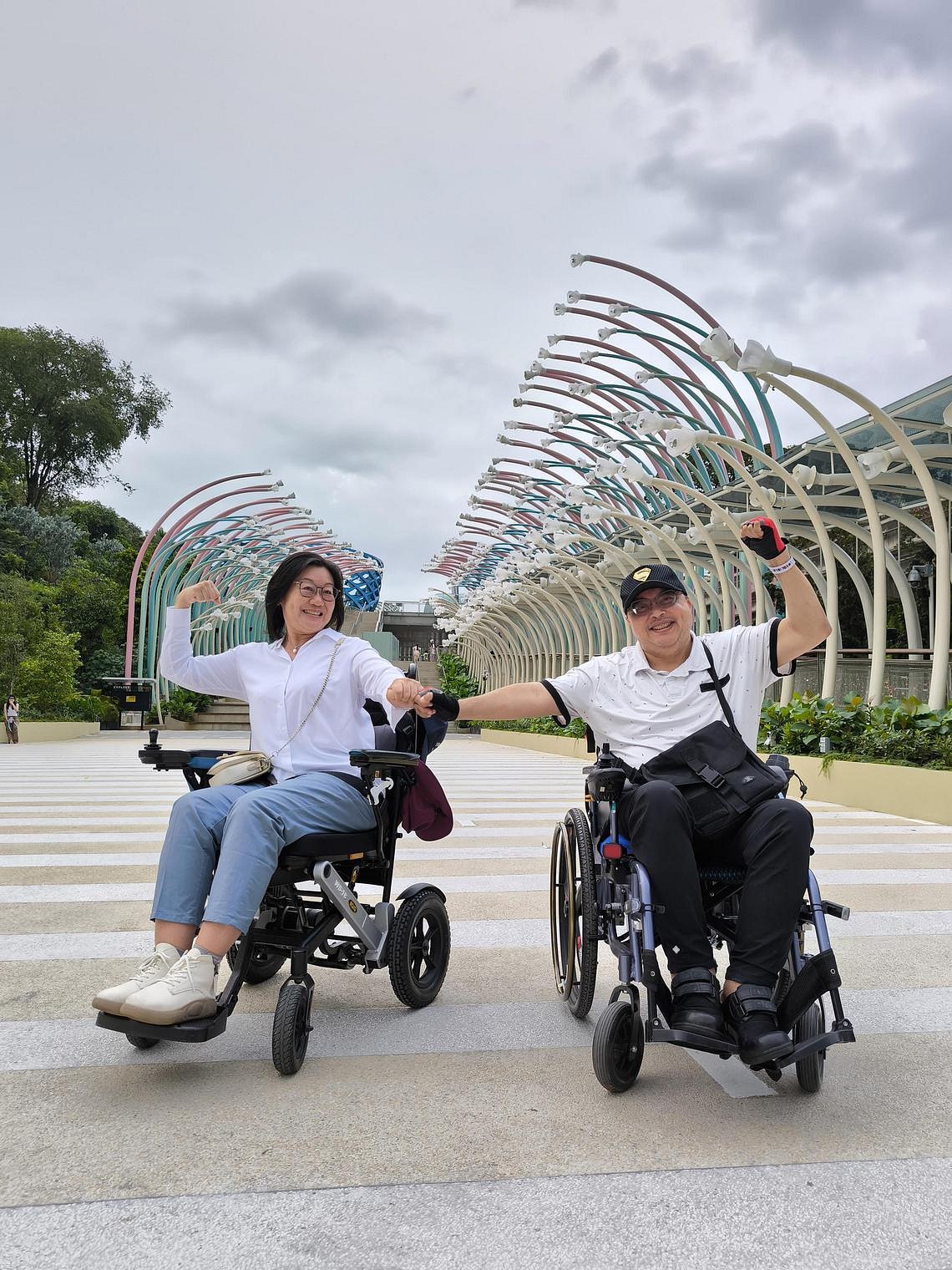
The three guides in the tour, given their own experiences with disabilities, understand the needs of guests of similar backgrounds.
Mr Law Yock Song, Tribe Tours’ managing partner and head of partnerships, was inspired to create more opportunities for people with disabilities in the tourism industry, after a successful pilot in late 2023 at the Enabling Village where four guides on wheelchairs led a group of tour participants.
The Enabling Village is the first inclusive community space in Singapore dedicated to integrating people with disabilities into society.
Around the same time, SDC also signed a memorandum of understanding with SG Enable to provide a more inclusive and accessible destination experience, among other areas of collaboration.
“This aligned perfectly with Tribe Tours’ goals, and we initiated a partnership to develop an accessible tour route,” says Mr Law, 40, who is married with one child. He worked at the Singapore Tourism Board before joining Tribe Tours in 2019 as part of its management team.
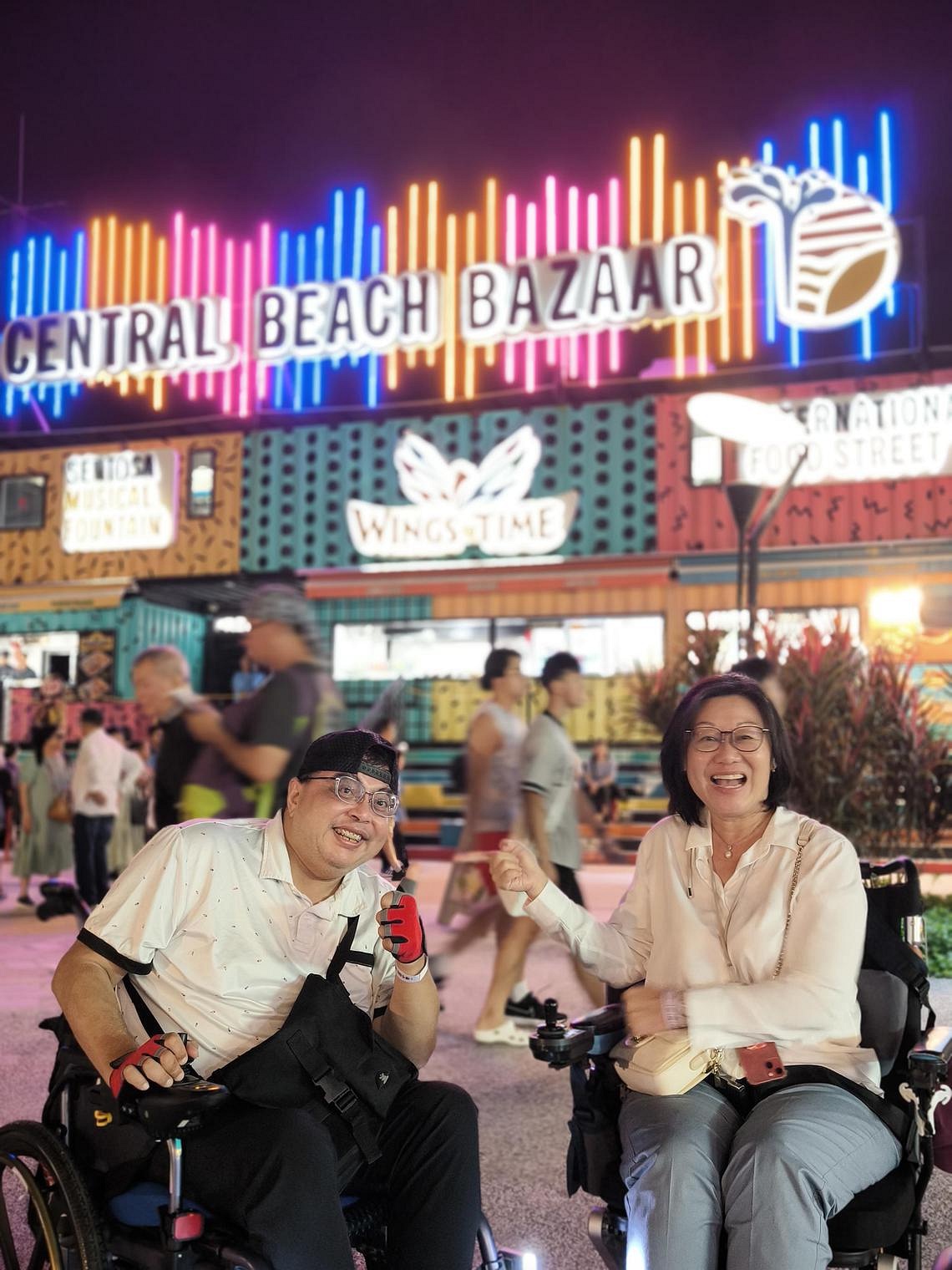
Several challenges were identified during the planning process for the tour, which started in November 2023.
For instance, the cable car could not accommodate motorised wheelchairs due to battery-pack fire safety concerns. Also, some routes were not fully accessible for wheelchair users.
To overcome these obstacles, Mr Law worked with Sentosa’s teams to develop multiple iterations of the tour before finalising the current route.
The Sentosa Wheel Venture Accessibility Tour starts from HarbourFront MRT station, where guests are greeted by tour docents who are wheelchair users. They arrive at Imbiah Station via the Sentosa Express monorail line.
“In our conversations, it was clear that people with disabilities crave simple experiences, such as being close to nature and enjoying meals against a breathtaking backdrop of the beach and sea,” adds Mr Law.
Info: Tours are priced at $120, which includes admission tickets to SkyHelix Sentosa, UltraGolf, an alfresco-style casual dinner (shared main course and drink) by Palawan Beach and a tour guide. E-mail Tribe Tours at bookings@tribe-tours.com or go to str.sg/dMFQ
Ascott’s accessible rooms
Hospitality group The Ascott Limited marks four decades in 2024 by going “unlimited”.
To create “unlimited good” and positively impact the future of travel, the home-grown global player – established in 1984 as a wholly owned business unit of CapitaLand Investment – explored ways to deepen its commitment to the public.
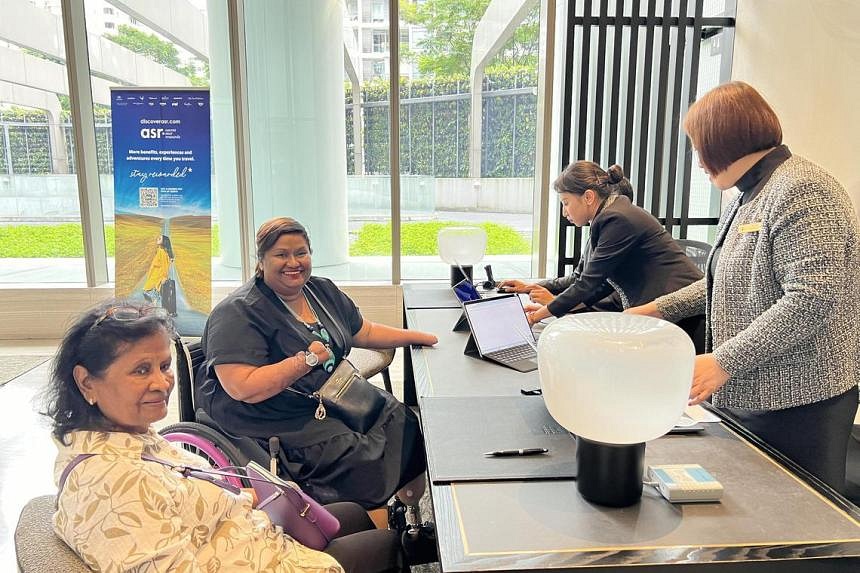
Under its sustainability framework called Ascott Cares, launched in 2022, the group is making its properties more accessible and disability-friendly by cultivating a more inclusive environment for clients and staff.
Inclusivity is a key component of the framework, says Ms Beh Siew Kim, chief financial and sustainability officer for Lodging at CapitaLand Investment, and managing director for Japan and South Korea for The Ascott Limited.
She was inspired by a recent talk by SG Enable at a Singapore Tourism Board event on how companies can better embrace inclusivity in hospitality and tourism.
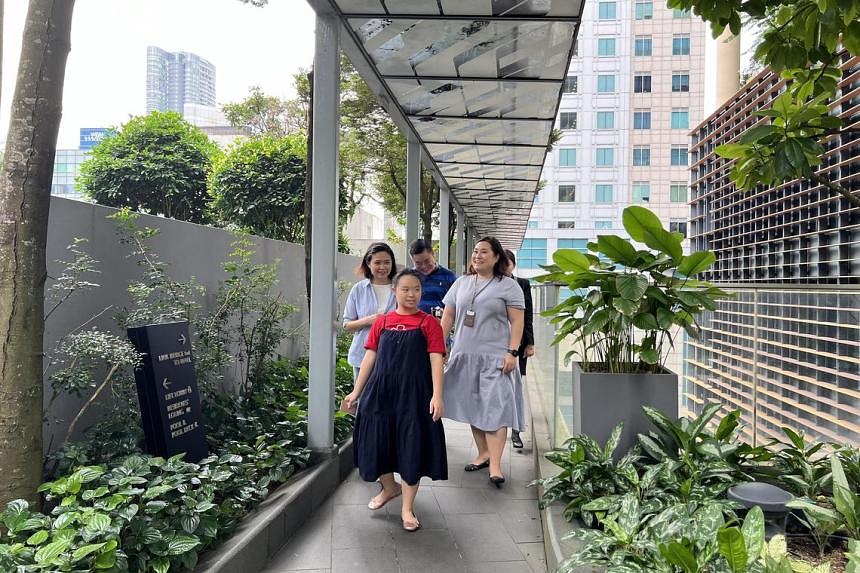
In January, Ascott started discussions with SG Enable for a collaboration to make a positive difference in the stay experience for Ascott’s guests.
“We are privileged to have found a like-minded partner in SG Enable, and are even more excited to have kick-started our partnership this year to elevate disability inclusion and jointly establish new standards for accessibility in the hospitality sector,” says Ms Beh.
She adds that all guests deserve an equal chance of enjoying a holiday.
“Having first engaged in conversation with SG Enable at the start of 2024, we invited people with disabilities and their caregivers from the agency’s network to stay at the property in May to experience the inclusive spaces that we have at our properties in Singapore,” says Ms Beh.
Ascott received helpful feedback and is making ongoing adjustments to ensure that the group is constantly improving and addressing guests’ needs.
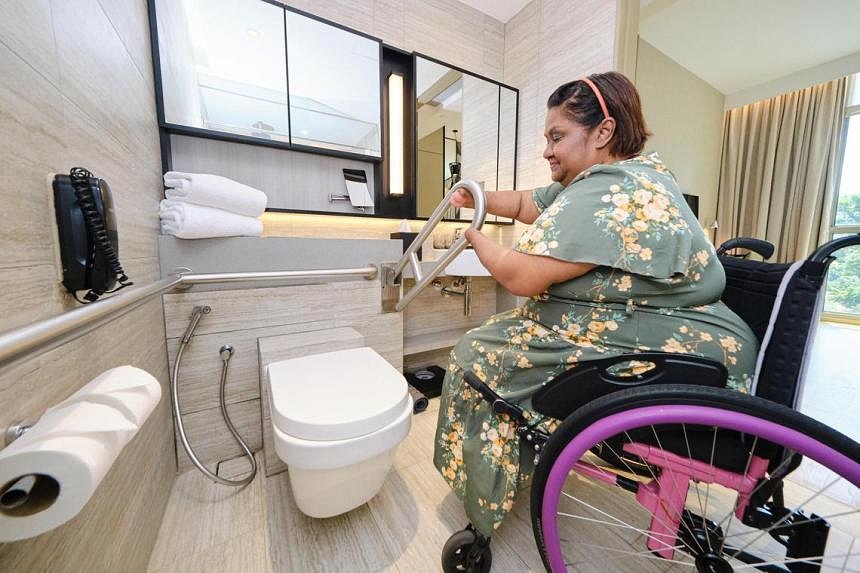
For instance, referencing the Design Playbook for Inclusive Spaces produced by SG Enable in a tie-up with local studio Stuck Design, Ascott is working on creating noise-reducing soft padding to support guests with autism or hearing disabilities.
Accommodation options include accessible guest rooms catering to wheelchair users, as well as dual-key units that facilitate multi-generational living.
At Ascott Orchard Singapore, public toilets are equipped with accessibility features such as grab bars and distress buttons.
Fifteen properties in Ascott’s portfolio in Singapore have been equipped with accessibility features. Ascott says it will continue to work closely with SG Enable to jointly review the 2024 initiatives.
The partnership is a big step forward towards the company’s goal of scaling up on disability inclusion efforts from 2025 across its global portfolio of more than 950 properties in more than 230 cities.
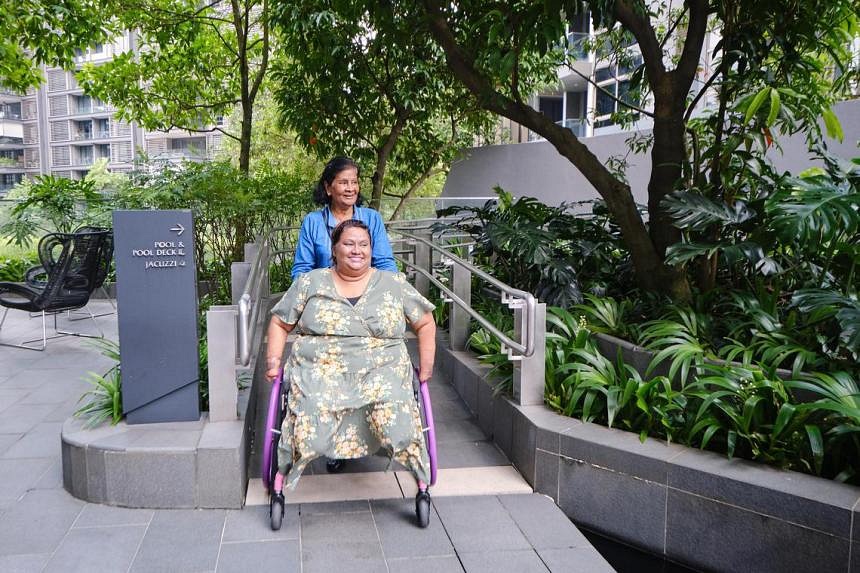
Ms Ku Geok Boon, chief executive of SG Enable, says the agency’s partnership with Ascott will elevate disability-inclusive standards in hospitality, setting a new global benchmark.
She adds: “The joint development of this global playbook ensures consistent, high standards of accessibility and inclusivity across Ascott’s properties worldwide, and establishes Singapore as a leader for disability inclusion.”
Haworth’s wheelchair-friendly work pods
One of the latest designs in leading global furniture brand Haworth’s ergonomic office solutions is its HushAccess work pods.
The free-standing acoustic pods are a flexible alternative to built-in meeting rooms.
They can be set up in building lobbies or malls to allow everyone – including wheelchair users and other people with disabilities – to work in comfort and privacy.
The acoustic booths are designed with noise reduction in mind, so users’ conversations are inaudible beyond the booth, and they hear minimal noise from outside.
The pods arrive flat-packed, can be set up quickly and are designed as a plug-and-play addition to existing furniture, requiring only a power outlet to be fully functional.
For users with limited arm movement, lighting and ventilation inside can be activated by motion sensors, eliminating the need to manually adjust the controls. All pods come in modules with customisable finishes.
There is a range of designs for viewing at Haworth’s Singapore showroom in Anson Road.
Haworth, which was established in 1948 and is headquartered in Michigan in the United States, operates in more than 150 countries.
Over the years, it has collaborated with acclaimed names such as Spanish designer and architect Patricia Urquiola and Dutch master Marcel Wanders.
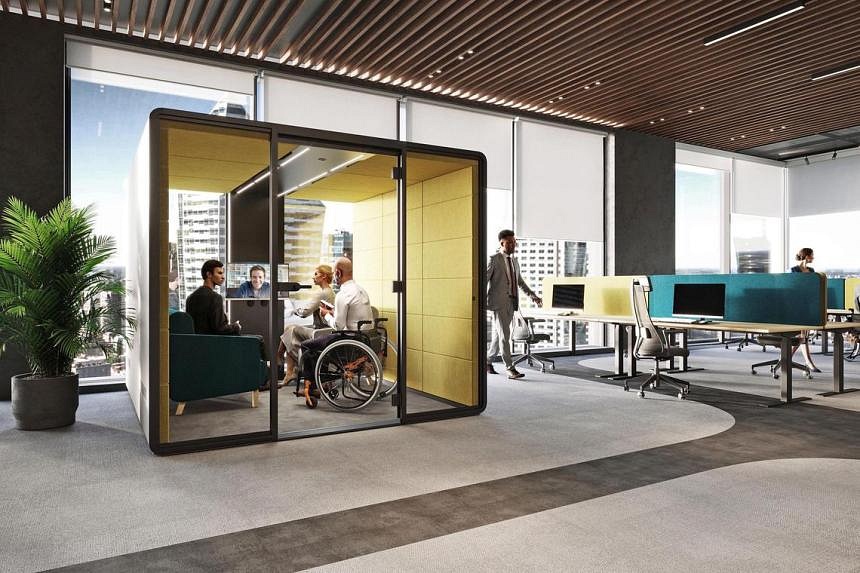
Mr Tim Argent, Haworth’s sales manager in Singapore, says that while most of the HushAccess projects are in Europe, there has been increased demand in Asia as a result of an increased focus on inclusive design.
He says that with more employees returning to the office, there is a greater need to provide innovative spaces for business growth and promote collaboration between colleagues.
“Recent changes have shifted office work perspectives, emphasising inclusiveness, diversity, and flexibility to meet the varied needs of the community,” he adds.
Info: Prices are available on request. For a free consultation on the HushOffice range of pods, call 6735-1155, e-mail tim.argent@haworth.com or go to str.sg/ey9m

No comments
Share your thoughts! Tell us your name and class for a gift (: